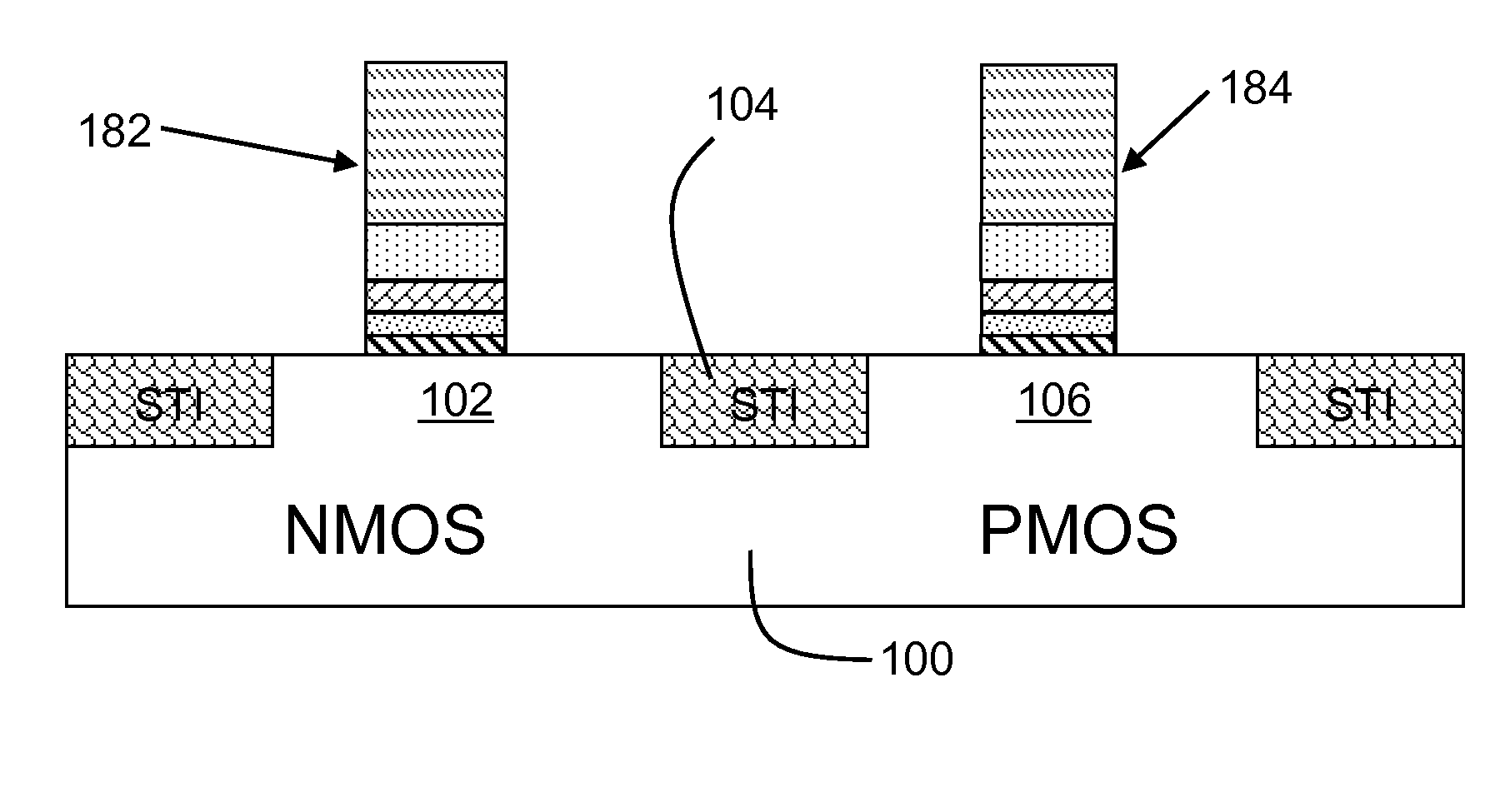High-k dielectric and metal gate stack with minimal overlap with isolation region and related methods
- Summary
- Abstract
- Description
- Claims
- Application Information
AI Technical Summary
Benefits of technology
Problems solved by technology
Method used
Image
Examples
Embodiment Construction
[0014]Conventional approaches to forming high dielectric constant (high-k) dielectric and metal gate stacks attribute the above-described silicon oxide re-growth in active regions to oxide from the high-k gate dielectrics (which typically include an oxide such as hafnium oxide (HfO2)) that are positioned over the active region. However, this disclosure identifies a root cause of the silicon oxide re-growth as the overlap between the gate stack and the adjacent oxide isolation regions. In particular, while the high-k dielectrics indeed play a direct part in the silicon oxide re-growth, a more significant effect is created in how the high-k dielectrics tend to scavenge oxygen (O2) from the adjacent isolation regions, and pipe it into the active silicon regions adjacent to the isolation regions. It is this overlap area that determines the amount of silicon oxide regrowth. According to this disclosure, the overlap is restricted to minimize the silicon oxide re-growth.
[0015]Referring to ...
PUM
 Login to View More
Login to View More Abstract
Description
Claims
Application Information
 Login to View More
Login to View More - R&D
- Intellectual Property
- Life Sciences
- Materials
- Tech Scout
- Unparalleled Data Quality
- Higher Quality Content
- 60% Fewer Hallucinations
Browse by: Latest US Patents, China's latest patents, Technical Efficacy Thesaurus, Application Domain, Technology Topic, Popular Technical Reports.
© 2025 PatSnap. All rights reserved.Legal|Privacy policy|Modern Slavery Act Transparency Statement|Sitemap|About US| Contact US: help@patsnap.com



